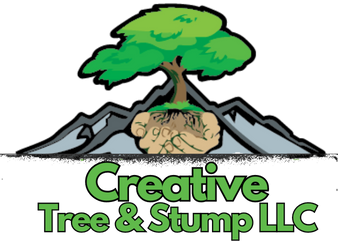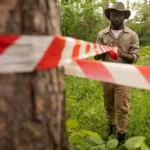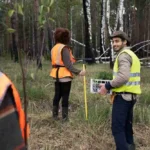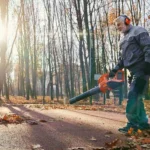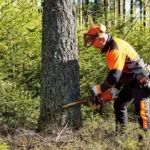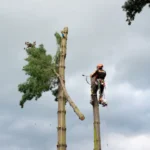
5 Tree Removal Red Flags Every Denver Property Owner Must Watch For
Trees are a crucial part of any property’s landscape, offering shade, natural beauty, and even increasing property value. However, trees can also pose serious risks if they’re dying, diseased, or structurally compromised. Ignoring tree issues could lead to property damage, injuries, or worse.
If you’re a Denver property owner, you need to be aware of the warning signs that a tree might be a hazard. Below, we’ll explore five key red flags that indicate it may be time to consult an expert arborist.
Leaning Trees A Clear Danger Ahead
A tree that’s leaning unnaturally is one of the most obvious warning signs of instability. While slight learning may occur naturally over time, significant or sudden learning often points to structural weakness, compromised roots, or damage from storms or wind.
Warning Signs Your Tree May Be at Risk
- Cracked Soil Around the Base: This could indicate root damage or loosening that’s causing the tree to lean.
- Exposed Roots: When roots are visible on one side of the tree, the tree may be losing its ability to anchor securely.
- Leaning After Recent Weather Events: Sudden shifts following heavy winds or storms suggest the tree is now unsafe.
Leaning trees can fall without notice, leading to property damage or injury. If you notice leaning trees on your Denver property, it’s crucial to contact a professional tree removal service.
Dead or Falling Branches
Have you noticed dead branches dropping from your tree? This isn’t just messy; it’s dangerous. Falling limbs can damage roofs, vehicles, or injure people passing underneath. Deadwood in the canopy also indicates internal problems such as disease or age-related decay.
What to Look Out For
- Branches Without Leaves: If large parts of your tree are bare during the growing season, it may be struggling to survive.
- Cracks Where Branches Meet the Tree: This could be a sign of weakness that may cause branches to detach and fall.
- Clusters of Fallen Branches Post-Storms: If you’re constantly cleaning up after every storm, the tree needs expert attention.
Pruning deadwood can solve minor issues. However, frequent limb loss likely signals a bigger issue requiring professional evaluation.
Fungal Growth at the Base
Fungi, such as mushrooms or fungal conks, growing around the base of a tree are a major red flag. Decaying fungi are nature’s way of breaking down dead and dying wood. While this is essential for forest ecosystems, it poses a threat to your property.
How Fungal Growth Threatens Stability
- Roots and Trunk Decay: Fungi feed on the inner structure of the tree, weakening its ability to stand tall.
- Hollow Pockets: Mushrooms often signal hollow cores that reduce a tree’s durability under stress.
- Spread of Disease: Once fungi take hold, the tree’s natural defenses weaken, leaving it prone to additional attacks.
If you spot fungal growth, act quickly. Professional arborists like those at Creative Tree & Stump LLC can assess whether the tree can be remedied or needs to be removed.
Pest Infestation or Tree Disease
Denver’s climate may be ideal for trees, but it’s also a hotspot for pests like beetles, borers, and aphids. Unchecked, these pests can wreak havoc on your trees, leaving behind weakened structures and disease.
Tell-Tale Signs of Infestations and Disease
- Holes in Bark or Branches: These often indicate an infestation of borers or beetles.
- Weeping Sap or Gashes: This suggests pest activity or bacterial infections.
- Mottled Leaves or Thin Canopies: Discolored leaves could point to diseases killing your tree or out-of-control pests.
Keep in mind that pests and diseases spread quickly among trees. Regular tree inspections can uncover issues early, potentially saving both your tree and your wallet.
Root Damage or Lifting Sidewalks
Roots are the foundation of a tree’s stability. Any signs of root stress or damage should be treated as a top priority.
Signs to Watch For
- Damaged Paving or Sidewalks: Uplifted concrete can indicate roots are expanding where they shouldn’t be.
- Bare or Exposed Roots at the Surface: This signals stress or instability below ground.
- Roots Severed During Construction: Even minor damage during landscaping projects can have long-term effects on a tree’s health and stability.
Compromised roots can fail to support the tree, making it a hazard during high winds or storms. A certified arborist can evaluate whether root damage is repairable or if tree removal is necessary.
Why Denver Homeowners Trust Creative Tree and Stump LLC
At Creative Tree and Stump LLC, we understand the unique tree care challenges that come with living in Denver’s vibrant environment. With decades of experience, our team specializes in identifying hazards and protecting your property.
Here’s Why Our Clients Choose Us
- 24/7 Emergency Tree Removal: Whether it’s storm damage or other urgent issues, we’re always here to help.
- Expert Arborists: Our team is highly trained in identifying and resolving tree health issues.
- Comprehensive Services: From pruning and trimming to full tree and stump removal, we’ve got you covered.
- Commitment to Safety: We prioritize safety in every project, ensuring no harm comes to your family or property during tree removal.
Still unsure if you need expert help? We offer free assessments to give you peace of mind.
Take Action Contact Creative Tree and Stump LLC Today
Identifying these red flags early can save you from costly repairs and dangerous situations. Whether your tree is leaning, diseased, or riddled with pests, it’s essential to act quickly.
Don’t put your property or loved ones at risk.
- Contact Creative Tree & Stump LLC for a free inspection.
- Call our 24/7 emergency line at (970) 580-6932 for immediate assistance.
- Visit our website to learn more about our services or book your tree removal today.
Your trees deserve the best care Denver has to offer. Trust Creative Tree & Stump LLC to keep your property safe, beautiful, and thriving.
